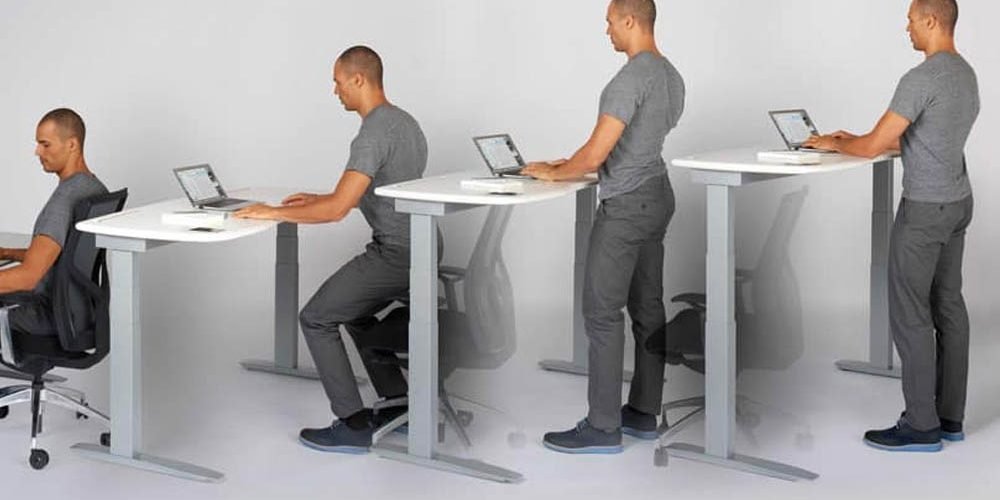If you work in an office, you’re probably all too familiar with the discomfort that can come from sitting at a desk for hours on end. Back pain, neck strain, and eye strain are just a few of the issues that can arise from prolonged sitting. One solution that’s become increasingly popular in recent years is the standing desk. But what exactly is a standing desk, and what are the benefits of using one?
A standing desk, as the name suggests, is a desk that’s designed for standing rather than sitting. It can come in many different forms, from simple risers that elevate your existing desk to full-fledged adjustable-height desks that allow you to switch between sitting and standing. Some standing desks also have built-in features like treadmill bases or bicycle pedals, allowing you to get some exercise while you work.
So, what are the benefits of using a standing desk? Let’s take a look at the research:
Table of Contents
Reduced Risk of Chronic Diseases
One of the most compelling reasons to use a standing desk is the potential health benefits. Studies have shown that prolonged sitting is associated with an increased risk of chronic diseases like obesity, type 2 diabetes, and heart disease. Standing, on the other hand, can help to increase energy expenditure and improve blood sugar control.
One study published in the European Journal of Preventive Cardiology found that using a standing desk for just 2 hours per day was associated with a 10% reduction in the risk of heart disease. Another study, published in the American Journal of Epidemiology, found that standing for at least 6 hours per day was associated with a lower risk of obesity compared to sitting for the same amount of time.
Some people also prefer walking on a WalkingPad while working using a standing desk. If you work at the office for long periods of time and have no time to exercise, this could be something that you need. This allows you to do some minor exercise while working.
Improved Posture and Core Strength
Sitting for long periods of time can take a toll on your posture and core strength. By standing, you engage the muscles in your legs, core, and back, helping to improve your posture and reduce the risk of back pain and other musculoskeletal issues.
Increased Energy and Focus
Standing can also help to increase your energy and focus, which can be especially helpful during long workdays. One study published in the International Journal of Environmental Research and Public Health found that standing desks were associated with increased alertness and decreased boredom and stress compared to sitting desks.
Improved Mental Health
Using a standing desk can also have a positive impact on your mental health. A study published in the Journal of Physical Activity and Health found that using a standing desk was associated with improved mood and reduced stress levels compared to sitting. This may be because standing can help to promote feelings of energy and positivity, which can have a ripple effect on your overall well-being.
Better Productivity
Finally, using a standing desk may also improve productivity. A study published in the Journal of Occupational Health Psychology found that workers who used standing desks were more productive and had fewer absences than those who used sitting desks. This may be because standing can help to improve energy levels and focus, allowing workers to get more done in less time.
Of course, there are also potential downsides to using a standing desk. Standing for long periods of time can be tiring, and it’s important to take breaks and switch between sitting and standing throughout the day. It’s also important to make sure that your standing desk is properly adjusted to your height and that you’re using good posture while standin. For those who prefer a more private workspace, using desk divider screens can be a helpful addition to their standing desk setup.
Another potential downside is that standing for long periods of time can cause foot, ankle, or knee pain. One way to address this issue is by wearing comfortable shoes or using an anti-fatigue mat to reduce the impact on your joints.
In addition, some people may experience discomfort in their lower back, hips, or legs from standing for extended periods of time. It’s important to listen to your body and take breaks as needed.
In terms of how much time you should spend standing vs. sitting, there isn’t a one-size-fits-all answer. The key is to find a balance that works for you.





